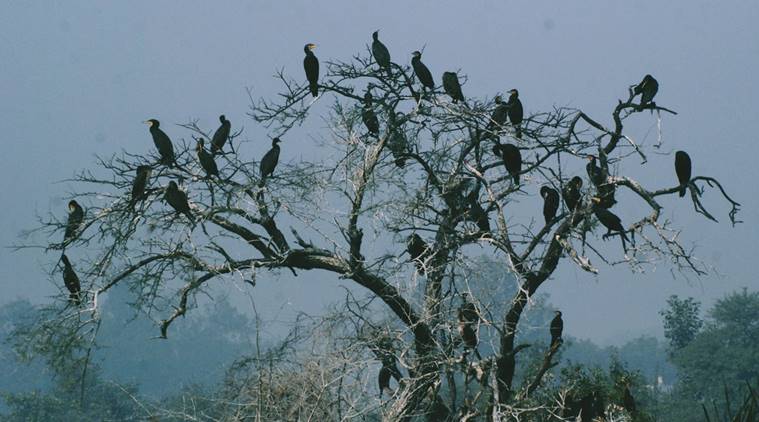- India
- International
From barren land to rich ecosystem: Story behind Yamuna Biodiversity Park
A Delhi University professor emeritus and head of the Centre for Environmental Management of Degraded Ecosystems, the park initially only had mongooses and lizards and 31 species of birds in 2004.
 A leopard was sighted at the park, which proved there was a functional ecosystem in the area.
A leopard was sighted at the park, which proved there was a functional ecosystem in the area.
Setting an example for environmental conservation in the country, the Yamuna Biodiversity Park, officials said, has grown from a “barren land” to a rich ecosystem with thousands of plant, animal and hundreds of bird species, as well as a closed canopy forest with trees as high as 45 feet.
According to C R Babu, a Delhi University professor emeritus and head of the Centre for Environmental Management of Degraded Ecosystems, the park initially only had mongooses and lizards and 31 species of birds in 2004. Now, he said, it has grown into a nature reserve and is home to 1,500 species of plants and animals, including antelopes, hog deers and porcupines, and 200 species of birds.
On the International Day for Biological Diversity Wednesday, Babu told The Indian Express how the 457-acre park in North Delhi’s Wazirabad was transformed. “The land given to us had salt accumulation in the soil… Only salt-loving plants would have survived there,” he said.
Native Indian plants were introduced initially, but without success as the pH level (scale of acidity) was not neutral, Babu said: “We then planted one species of grass that brought the pH level from 10 to seven (neutral), following which we brought in native plants.”
Today, Babu said, the park is a fully functional nature reserve that simulated a national park.
In November 2016, a leopard was sighted at the park, which proved there was a functional ecosystem in the area, according to Dr Faiyaz Khudsar, a scientist in-charge of the park. The leopard was later sent to Rajaji National Park, Uttarakhand, in December. Khudsar said, “It was hard to see it go, but I feel more leopards will come into the park in the future.”
The park is divided into two, with phase one being 157 acres and phase two occupying 300 acres — which includes a large wetland and, according to Babu, witnesses thousands of migratory birds every year. There are six biodiversity parks in Delhi, including Kamla Nehru Ridge in Civil Lines, Aravalli Biodiversity Park in Vasant Vihar and Tilpath Valley Biodiversity Park. Work is underway on a seventh, South Biodiversity Park, next to DND flyway, said Tarun Kapoor, the vice chairman of the Delhi Development Authority.

“The parks are beneficial for the city because they help in improving the air quality. The temperature is around two degrees lower in these parks as compared to outside,” Kapoor said.
Babu added the parks also act as a filter for pollution: “Their main function is environment sustainability which, in turn, has an impact on our lives.”
Apr 19: Latest News
- 01
- 02
- 03
- 04
- 05






































